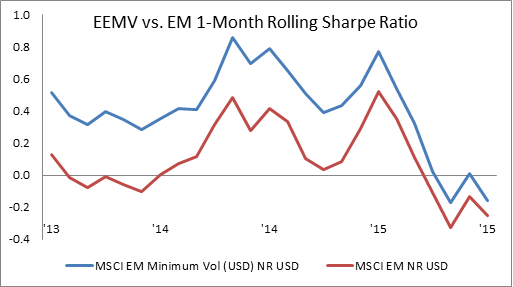Lastly, it is important to quantify the risk reduction over the short-, medium-, and long-term. Examining the data table below, it can be seen that incorporating a minimum volatility approach to asset allocation can reduce risk across geographic segments by more than 20% over the long-run. These findings are consistent in the short and medium terms as well.
In closing, minimum volatility ETFs can be an excellent addition to one’s portfolio, especially as a tool to tilt a portfolio in a defensive manner without having to withdraw from equities completely. These strategies can be found in many of Nottingham’s equity allocations, and are one example of how we manage risk within our client portfolios. While minimum volatility ETFs may not appeal to everyone, there are plenty of other ways to use factor ETFs to tilt a portfolio. For example, defensive sector positioning, value or quality tilts, or other low volatility strategies may apply. Regardless of what strategy employed, managing risk within client portfolios is paramount, and minimum volatility strategies should be a part of the equation.
Matthew Krajna is a Portfolio Manager at Nottingham Advisors, a participant in the ETF Strategist Channel.


